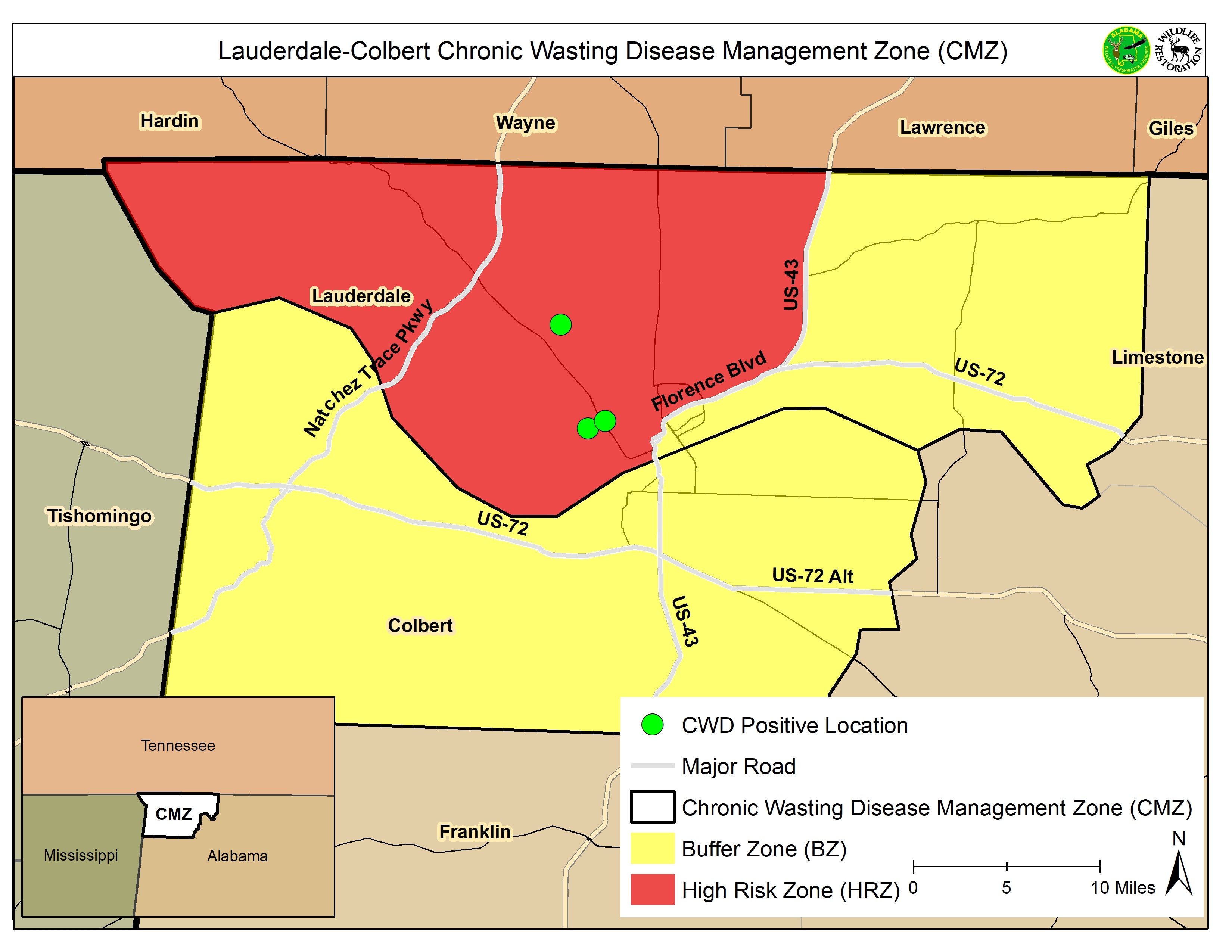The Alabama Department of Conservation and Natural Resources (ADCNR) announces that a third case of Chronic Wasting Disease (CWD) in a hunter harvested, white-tailed deer has been confirmed in Lauderdale County in northwest, Alabama. The first two cases of CWD in Alabama’s deer herd were detected in Lauderdale County in early 2022.
After the initial CWD-positive deer was detected in January 2022, all of Lauderdale and Colbert counties were designated as a CWD Management Zone (CMZ).
Samples were collected from more than 3,500 white-tailed deer harvested statewide with over 1,100 of those samples collected within the CMZ during the 2022-2023 hunting season. More than 98% of all samples collected within the CMZ have been tested by the Alabama Department of Agriculture and Industries and the results have been received by ADCNR. Currently, only one positive has been detected this season. The positive sample was voluntarily submitted by a hunter as part of ADCNR's ongoing CWD monitoring efforts.
“I would like to thank hunters for their overwhelming support by providing a robust number of samples submitted for CWD testing this season,” said Chris Blankenship, ADCNR Commissioner. “As they have been in the past few years, hunters will continue to be our most important partners in the management of this disease as we move forward with future deer seasons. We also thank the Alabama Department of Agriculture and Industries for their continued partnership with statewide CWD monitoring. Their assistance testing the samples allows us to better serve our constituents by providing them with timely information on the distribution and extent of CWD in Alabama.”
CWD is a member of the group of diseases called transmissible spongiform encephalopathies (TSEs). Among cervids, CWD is a progressive, fatal disease that commonly results in altered behavior due to microscopic changes made to the brain of affected animals. An animal may carry the disease for years without outward indication. In latter stages of the disease, signs may include listlessness, lowering of the head, weight loss, repetitive walking in set patterns and a lack of responsiveness.
It is important that hunters be familiar with Alabama’s CWD regulation and the CWD regulations in other states. To review Alabama’s regulation and the latest information about CWD in the state, visit www.outdooralabama.com/cwd-info.
ADCNR promotes wise stewardship, management and enjoyment of Alabama’s natural resources through four divisions: Marine Resources, State Lands, State Parks, and Wildlife and Freshwater Fisheries. Learn more at www.outdooralabama.com.
###






